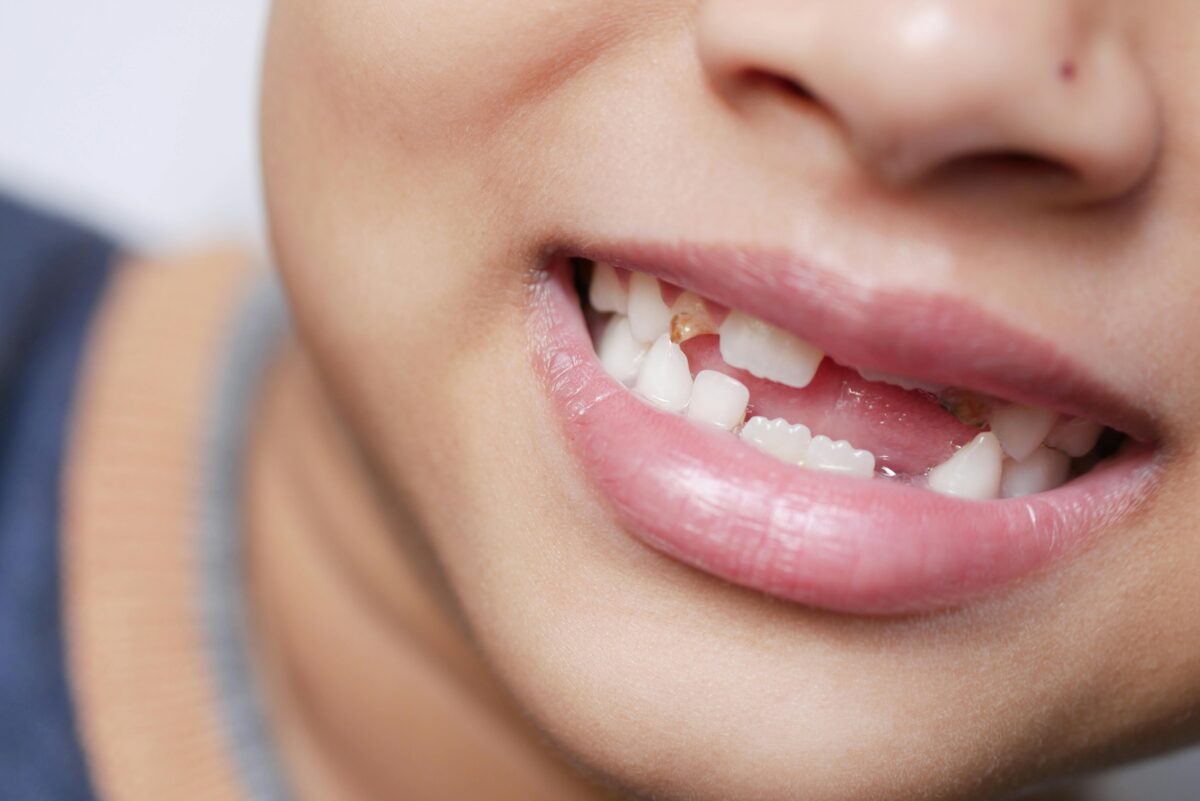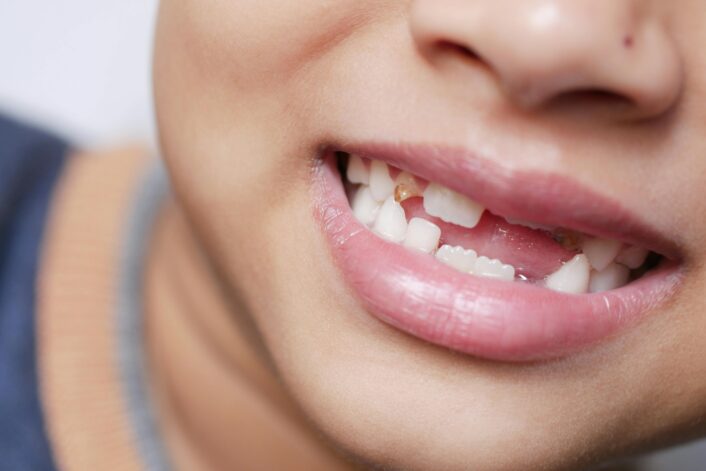Genetic Influences to Tooth Decay
harvey
on
April 29, 2024

Latest Posts
Table of Contents
Genetic Influences to Tooth Decay
Date of Content: April 12, 2024
Written by: Harvey Talento
Reviewed by: Maarit Tiirikainen, PhD
Tooth decay, also known as dental caries, is a prevalent chronic disease affecting individuals worldwide. It is a progressive destruction of tooth structure initiated by a complex interplay between bacterial activity, dietary habits, and host susceptibility. But can genetics influence tooth decay in individuals? Let’s find out.
What Causes Tooth Decay?
The primary etiologic agent of tooth decay is the accumulation of dental plaque, a biofilm composed of various microorganisms, primarily bacteria. Specific bacterial species, such as Streptococcus mutans and Lactobacillus acidophilus, are particularly adept at utilizing dietary sugars to produce organic acids. These acids create an acidic microenvironment that progressively dissolves tooth minerals, initiating enamel demineralization.

Clinical Manifestations
In its early stages, tooth decay may not present any noticeable symptoms. However, as the demineralization process progresses, individuals may experience:
- Tooth sensitivity to hot, cold, or sweet foods and drinks
- Discoloration of the affected tooth, appearing white, brown, or black
- Pain and discomfort, particularly when chewing
In advanced stages, cavitations (holes) form within the tooth, potentially leading to pulpitis (inflammation of the dental pulp) and periapical abscesses (infection at the root of the tooth).
How Genetics May Influence Tooth Decay
Recent advancements in genomic research have shed light on the genetic underpinnings of tooth decay.
A groundbreaking GWAS study conducted in 2018 enrolled participants aged from about 3 to 18 years and analyzed data from over 19,000 individuals, including studies on both primary and permanent dentition. Phenotype definitions were meticulously crafted to differentiate between the presence or absence of treated or untreated tooth decay in primary and permanent teeth.
NEDD9
NEDD9, a gene intricately involved in cellular signaling pathways, emerges as a pivotal player in the genetic predisposition to tooth decay, particularly in permanent dentition. Through its modulation of signaling cascades crucial for cell adhesion and migration, NEDD9 may influence the structural integrity of dental tissues, rendering them more vulnerable to acid attacks from oral bacteria metabolism.
Effects from genetic variations, like SNP rs7738851 near the NEDD9 gene, appear to disrupt these pathways, compromising the ability of teeth to withstand microbial colonization and contributing to an increased risk of tooth decay development.
ALLC Gene
In contrast, ALLC, encoding an enzyme involved in purine metabolism, presents a compelling narrative of genetic resilience against primary tooth decay. While the precise mechanisms remain elusive, ALLC’s involvement in metabolic pathways suggests a potential link between systemic metabolism and oral health.
Genetic variations within the ALLC gene (e.g. rs1594318) may confer protection against tooth decay development in primary dentition, potentially by modulating oral microbial composition or influencing the structural integrity of dental tissues.
GRIN2B Gene
In another study on children exhibiting a high DMFT (Decayed, Missing, and Filled Teeth) index, significant associations between pediatric tooth decay and SNPs within the GRIN2B gene, notably rs4764039-C, were unveiled. These findings suggest a potential involvement of GRIN2B in the development of tooth decay. Furthermore, behavioral factors such as irregular tooth brushing and irregular dental visits were identified as significant contributors to susceptibility. This research underscores the complex interplay between genetic predispositions and environmental factors in pediatric tooth decay, pointing towards the potential for targeted interventions tailored to individual risk profiles.
Non-Genetic Factors Influencing Tooth Decay
Several factors contribute to the susceptibility of an individual to tooth decay, a multifactorial process influenced by various elements:
- Dietary Habits: The frequency of consuming sugary foods and beverages is a pivotal factor. Regular intake of such items provides ample opportunity for bacteria to metabolize sugars into acids, which attack tooth enamel, leading to demineralization and eventual decay.
- Oral Hygiene Practices: Inadequate oral hygiene, such as irregular brushing and flossing, allows plaque—a sticky film of bacteria—to accumulate on teeth. Persistent plaque provides a breeding ground for bacteria, facilitating acid production and accelerating the demineralization process.
- Saliva Composition and Flow Rate: Saliva plays a crucial role in maintaining oral wellness by neutralizing acids, remineralizing teeth, and washing away food particles and bacteria. However, variations in saliva composition and flow rate can affect its protective properties. Reduced salivary flow, for instance, hampers the body’s natural buffering capacity, making teeth more vulnerable to acid attacks and impairing remineralization.
- Age and Life Stage: Tooth decay risk varies across different life stages. Children and older adults, for instance, may be more susceptible due to factors such as dietary habits, oral hygiene practices, and changes in saliva production. Additionally, lifestyle factors and health conditions that emerge with age can further influence susceptibility to decay.
Treatment Options
The management of tooth decay is contingent upon the severity of the condition, with various interventions tailored to address specific stages of decay:
- Early-stage Lesions: At the onset of decay, early-stage lesions may be reversible with appropriate interventions focused on remineralization. This often involves using fluoride toothpaste, which helps remineralize enamel and arrest the progression of decay. Additionally, professional topical fluoride applications administered by a dentist can enhance remineralization and strengthen tooth enamel, providing added protection against further demineralization.
- Cavitated Lesions: When decay advances to the point of cavitation, where a cavity or hole forms in the tooth structure, restorative treatments become necessary to repair the damage and restore tooth function. Common restorative options include dental fillings, which involve removing the decayed portion of the tooth and filling the cavity with a suitable material such as composite resin or amalgam. In cases of more extensive damage or structural compromise, dental crowns or onlays may be recommended to provide additional support and coverage.
- Pulp Necrosis: In severe cases where decay penetrates deep into the tooth, reaching the dental pulp—the soft tissue containing nerves and blood vessels—pulp necrosis, or the death of the dental pulp, may occur. To salvage the tooth and alleviate pain, root canal therapy is often performed. This procedure involves removing the infected or necrotic pulp tissue, disinfecting the root canals, and sealing them to prevent further infection. Following root canal treatment, the tooth is typically restored with a filling or crown to strengthen and protect it from future damage.
- Extensive Tooth Destruction: In situations where tooth decay has caused extensive damage beyond salvageable repair, or if untreatable infection compromises the surrounding tissues, tooth extraction may be the only viable option. Although extraction is typically considered a last resort, it may be necessary to prevent further complications and preserve overall oral health.
About the LifeDNA Nutrition Report
Discover the power of personalized nutrition with the LifeDNA Nutrition Report. By analyzing your unique genetic profile, this comprehensive report provides tailored insights into how your genes influence various aspects of your nutrition and well-being. Gain valuable knowledge about your body’s response to different nutrients and uncover potential predispositions to conditions like tooth decay.
Armed with this information, you can make informed choices to optimize your diet and lifestyle, leading to improved overall well-being. Invest in your health today with the LifeDNA Nutrition Report and take proactive steps towards a brighter future. Get it today!
Summary
- Tooth decay, primarily initiated by plaque accumulation and acid production from bacterial fermentation of dietary sugars, underscores the crucial role of oral bacteria in enamel demineralization.
- From subtle early signs like tooth sensitivity to advanced stages marked by cavitations and potential complications, recognizing the clinical manifestations of tooth decay is crucial for timely intervention.
- Insights into genetic variants like those associated with NEDD9, ALLC, and GRIN2B shed light on potential genetic mechanisms underlying tooth decay susceptibility.
- Beyond genetics, dietary habits, oral hygiene practices, saliva composition, age, and life stage contribute to an individual’s susceptibility to tooth decay, emphasizing the multifactorial nature of this condition.
- Tailored interventions, ranging from preventive measures to restorative treatments and endodontic therapy, are essential for managing tooth decay and preserving dental health.
References
- https://www.who.int/news-room/fact-sheets/detail/oral-health
- https://www.ncbi.nlm.nih.gov/books/NBK8259/#:~:text=Dental%20decay%20is%20due%20to%20the%20dissolution%20of%20tooth%20mineral,accumulates%20on%20the%20tooth%20surface.
- https://www.nidcr.nih.gov/health-info/tooth-decay
- https://www.healthdirect.gov.au/tooth-decay
- https://www.medicalnewstoday.com/articles/170136#causes
- https://academic.oup.com/hmg/article/27/17/3113/5040780?login=false
- https://www.sciencedirect.com/science/article/abs/pii/S0010482521008131?via%3Dihub
- https://www.who.int/news-room/fact-sheets/detail/sugars-and-dental-caries#:~:text=Free%20sugars%20are%20the%20essential,teeth%20(enamel%20and%20dentine).
- https://www.msdmanuals.com/home/mouth-and-dental-disorders/tooth-disorders/cavities
- https://decisionsindentistry.com/article/saliva-remineralization-and-dental-caries/#:~:text=The%20remineralization%20process%20in%20patients,calcium%20and%20phosphate%20ions%20present.&text=Fluoride%2C%20calcium%20and%20phosphate%20are,process%20during%20a%20cariogenic%20attack.
- https://www.ncbi.nlm.nih.gov/books/NBK573067/
Customer Reviews




*Understanding your genetics can offer valuable insights into your well-being, but it is not deterministic. Your traits can be influenced by the complex interplay involving nature, lifestyle, family history, and others.
Our reports have not been evaluated by the Food and Drug Administration. The contents on our website and our reports are for informational purposes only, and are not intended to diagnose any medical condition, replace the advice of a healthcare professional, or provide any medical advice, diagnosis, or treatment. Consult with a healthcare professional before making any major lifestyle changes or if you have any other concerns about your results. The testimonials featured may have used more than one LifeDNA or LifeDNA vendors’ product or reports.
- Category: Nutrition



